Album 4, Part 8 (pages 39-44)
4_39_2.jpg

Some of Cullison family. Nanny seated left, Edna standing.
4_40_1.jpg
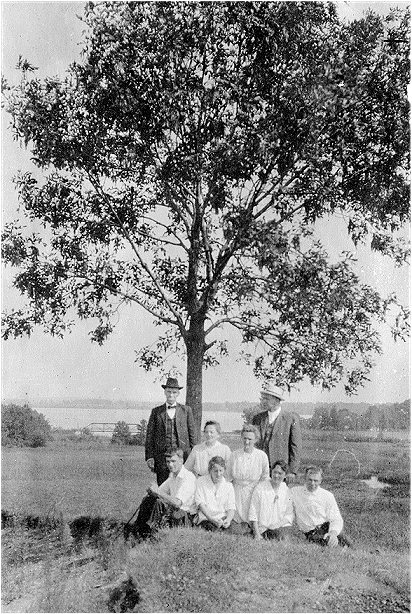
Dot with Cullison family. Dot and Edna front, Nanny center.
Dot's caption: Lone Oak. [Channel Lake in background]
|
This and pictures following were taken while Dot vacationed with the Cullisons
at Channel Lake, which is about 60 miles from Chicago. A later picture shows
that they traveled by train to Antioch and then by horse and carriage (actually
an original "station wagon") to the
cabins at Channel Lake. It was one of the favored
vacation places for Chicagoans and remained so until quite a while after World
War II. With modern autos and good roads more and more people could take day
trips to Fox River, Channel Lake, Starved Rock and the Dells. Now those places
are polluted, desecrated and overrun with undesirables. A shame. Perhaps these
places will be restored as part of environmental improvement programs. |
4_40_2.jpg
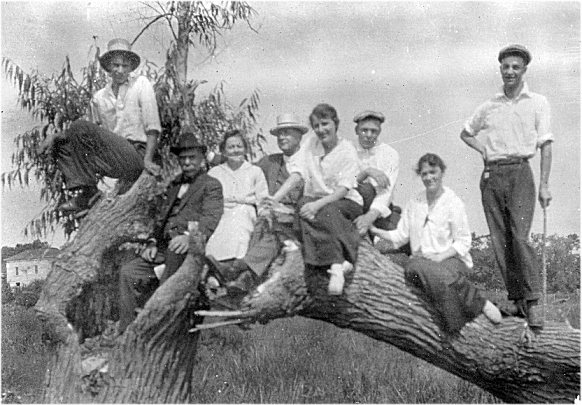
More fun on the vacation.
4_40_3.jpg
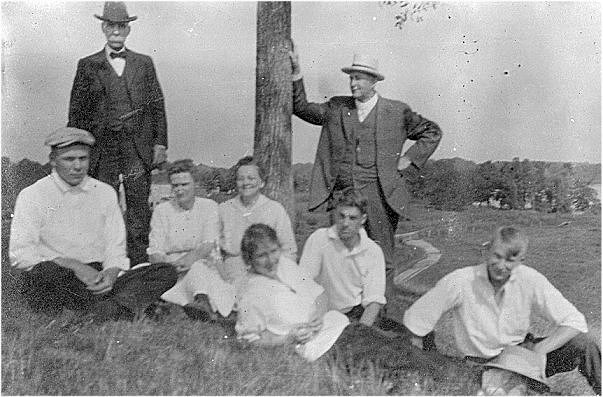
Dot's caption: Most of the family.
4_42_1.jpg
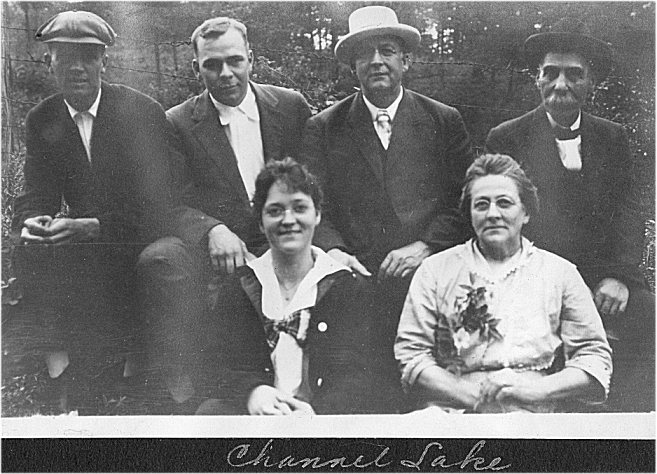
Same vacation, Edna at left.
4_42_3.jpg
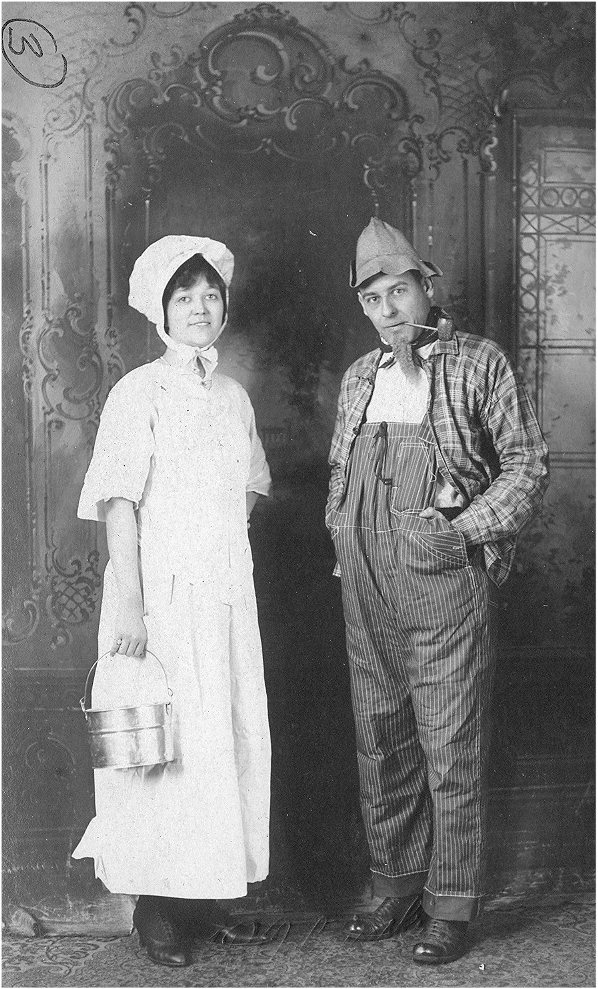
Studio photo of Edna and friend. Dot's caption: Real class.
Embossed lettering is B. Olozinski [studio] Chicago
4_43_1.jpg
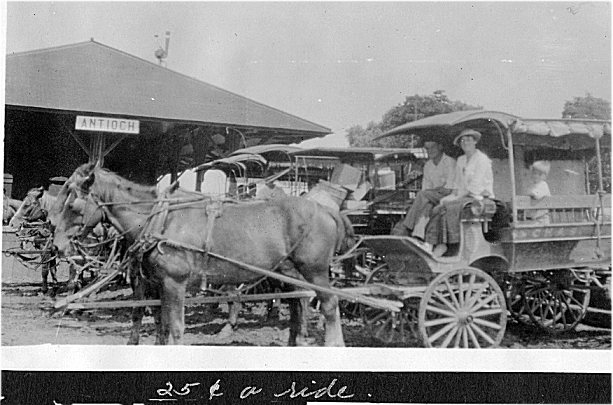
Connector carriages, called station wagons (the originals!), at the Antioch train station.
|
Note Dot's caption "25 cents a ride." This was a stiff price,
considering that a streetcar ride in Chicago was 3 cents, including a transfer
with which you could continue your journey on other streetcar lines throughout
the city. The only stipulation was that your next conveyance was going in the
same general direction (for example, once you've gone north your next transfer
must east or west, and once you've gone, say, west, you had to continue going
north or west). A record of your trip was kept on the transfer (about the size
and shape of a dollar bill), which was a small map of the Chicago streetcar
lines. Each conductor
would make a punch at your location when you got on and at all subsequent
transfers. The 3-cent cost continued at least until 1948 (after World War I and
World War II) when Bert graduated from high school.
In the automobile age, auto makers made vans with three rows of seats and wooden
body panels to simulate these original station wagons, and called them, you
guessed it, station wagons. By the 1950's they were a status symbol of the
up-and-coming prosperous middle class. They were used to go to and from the
railroad stations that spread out from Chicago and other cities into the
suburbs, where three or four bedroom, two bathroom, homes were built with
two-car garages.
|
4_43_2.jpg
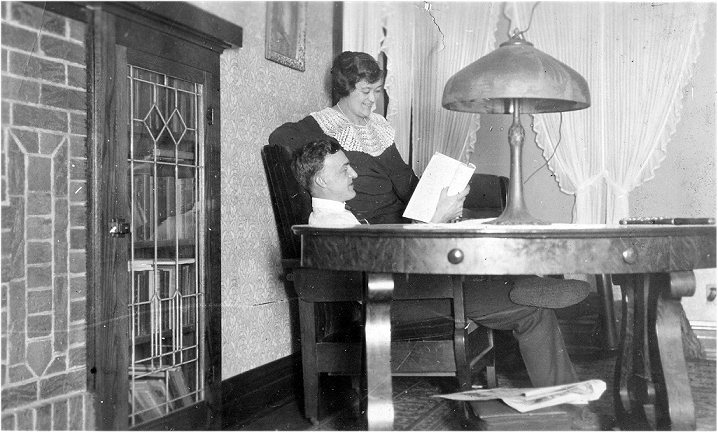
Ernest and Edna, happily married in their own home.
4_43_3.jpg
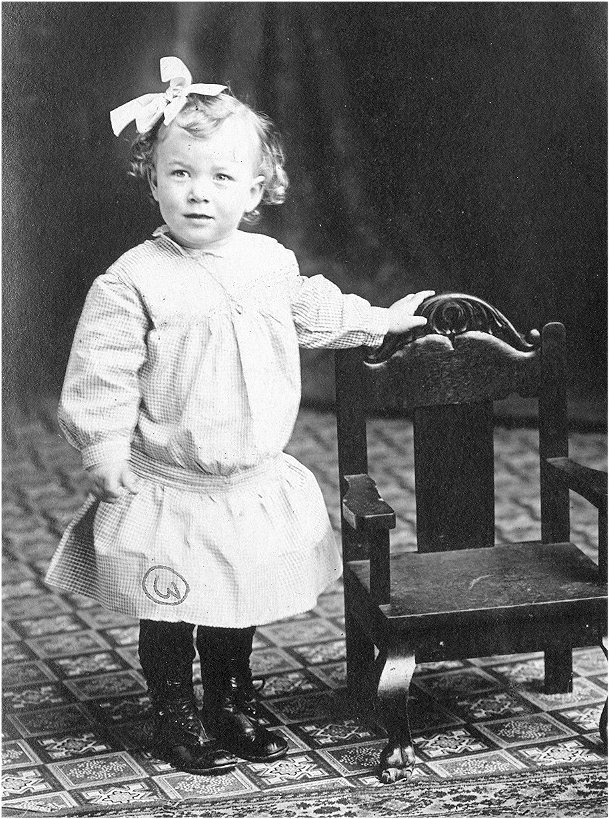
A jump back in time: Margaret's daughter Bea at about 2 years old.
Note the quality of the dress, boots, chair and flooring. Her father, Ed Owens,
was a senior executive.
4_44_1.jpg
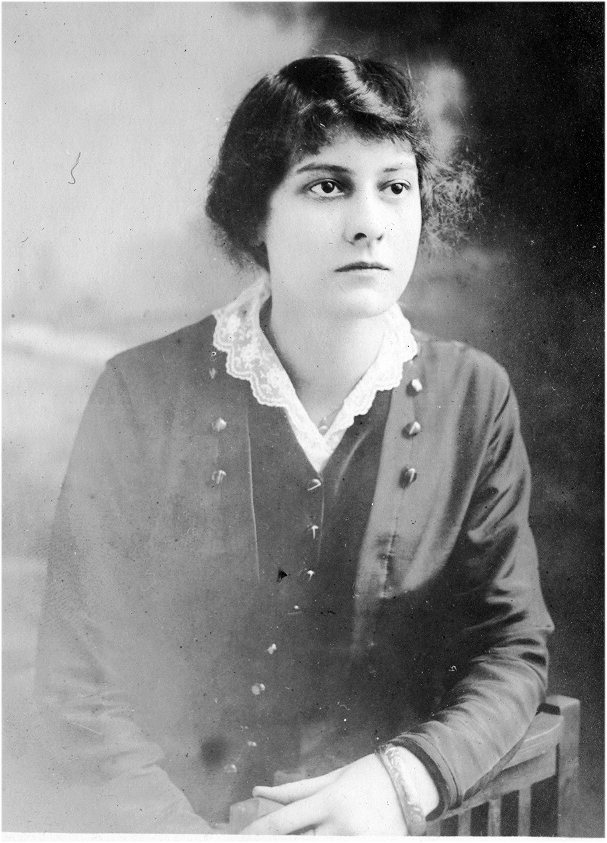
The enchanting Agnes Vogel, another close friend of Dot, and participant in the dress-up
parties.
4_44_3.jpg
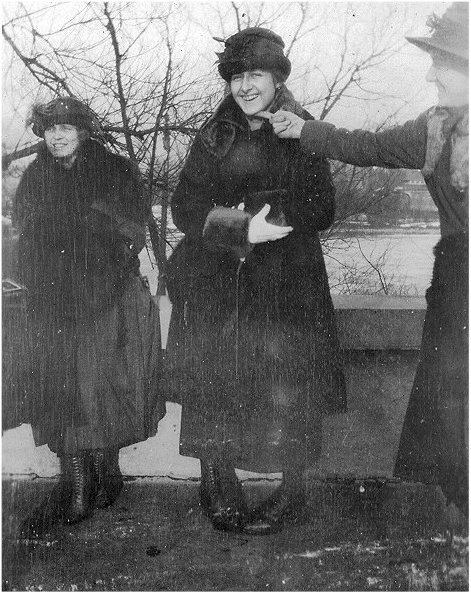
Dot is part of winter funny business in Chicago.
Continue to Album 4 Part
9 | Master
Table











